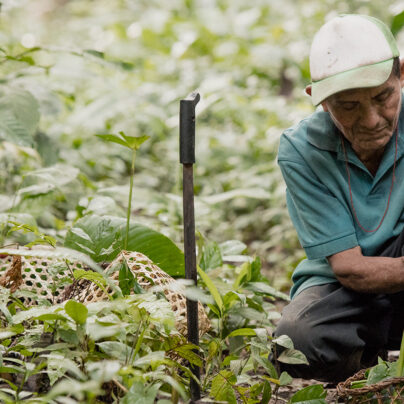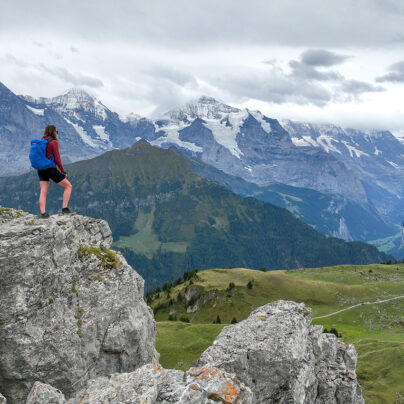Flash floods, Blowpipes and Wild Boar
Kayaking in the heart of Borneo
Jonny Hawkins
Days earlier, we meet a New Zealand helicopter pilot working for a logging company in Sarawak, Malaysia. We have been kayaking world class whitewater in Borneo for the past six weeks and now want to step up the challenge, leaving the predictable logging roads for another level of adventure. The pilot has been flying in Borneo for twenty years, travelling over most of the rivers that we are interested to explore. He points out on our 1970s pilotage chart all the rapids that he has seen from his helicopter. One of these rivers flows through the Mulu National Park, a UNESCO World Heritage Site, and an island of primary jungle in a sea of deforestation.
With the river identified, our challenge now is finding a way to get there. So far, rivers have either been accessed along logging roads or by using the only train in Borneo, a relic of the British colonial rule. With the little information we have, a foolproof plan is hatched to drive as close to the river as possible, hitch-hike upstream on trade boats and… hope for the best. We know this mission is full of unknowns but that is why we came to Borneo—adventure by the bucket load.
We arrive at the end of the road, a sleepy port town, a hub of trade for the upper reaches of the drainage where many Malaysians still live in traditional long houses. We ask around and eventually find a man called Hamilton. He lives in a long house just outside the Mulu National Park and offers to guide us there so that we can get a boat upstream. We drive our 4 x 4 through increasingly difficult terrain, along deserted tracks once used intensively by loggers. It is clear while speaking to Hamilton that the extensive logging across Malaysia has caused huge problems for the traditional people. He explains;
“The officials gave our village chief money to allow logging to take place on our land. The rest of the village protested when they heard but it was too late; our land was already destroyed”.
When we arrive at the village, the problems are instantly clear. The village is sitting in a metre of water caused by the increasing number of flashfloods, whereas previously the trees would have slowed down the run-off rate. We enter Hamilton’s house and drink bottled water. The village’s water supply has silted up from increased soil erosion, meaning they either drink bottled water or rain water from their corrugated roofs. Over dinner, Hamilton speaks emotionally about a loss of spiritual connection with their lands. We hear that hunting is more difficult, vegetation that once provided food and medicine has vanished. “It is increasingly difficult to maintain our traditional subsistence lifestyle”.
The next day, Hamilton organises a long boat to take us up into the Mulu National Park. With a thankful stroke of luck, we then happen to find the only jeep in the park. This takes us deep into the jungle, so that we arrive at our river access point at nightfall. Tired, we string our hammocks in anticipation of the first day on the river.
We have been kayaking world class whitewater in Borneo for the past six weeks and now want to step up the challenge, leaving the predictable logging roads for another level of adventure.
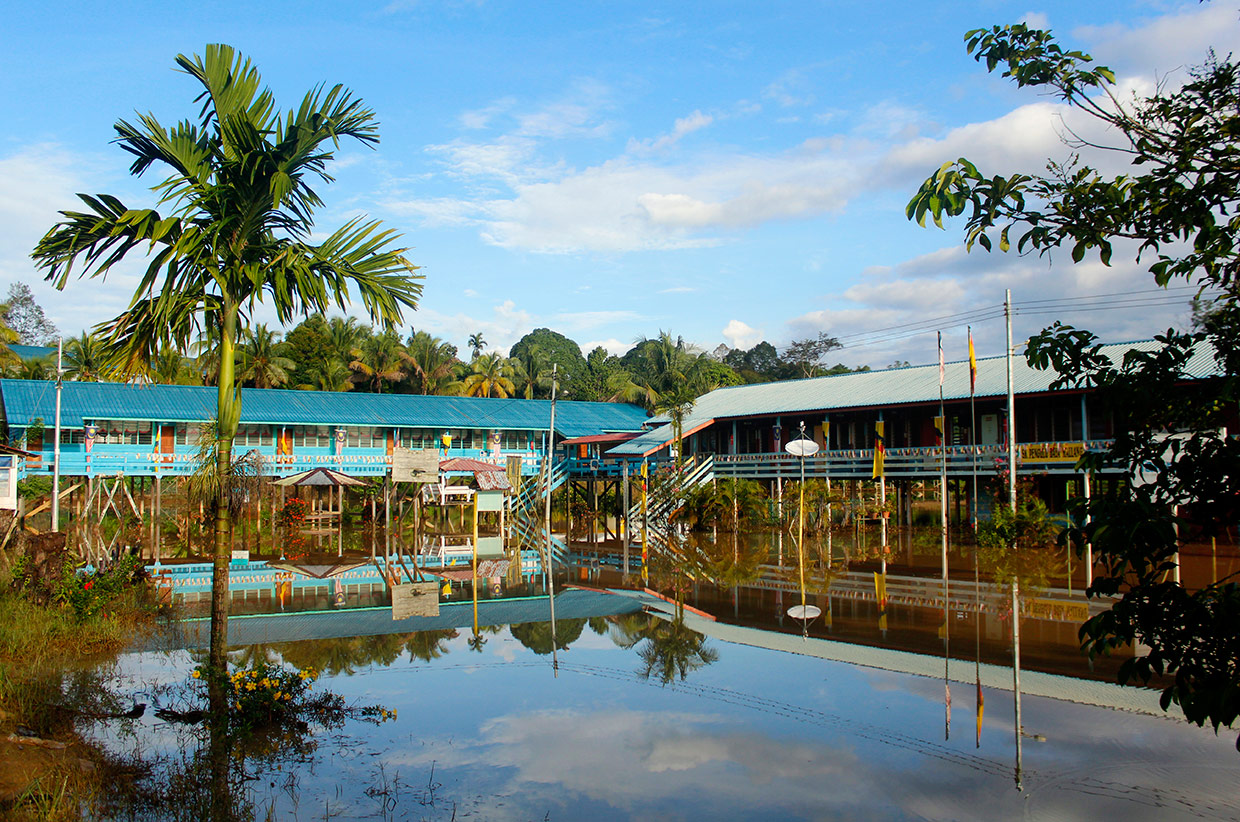
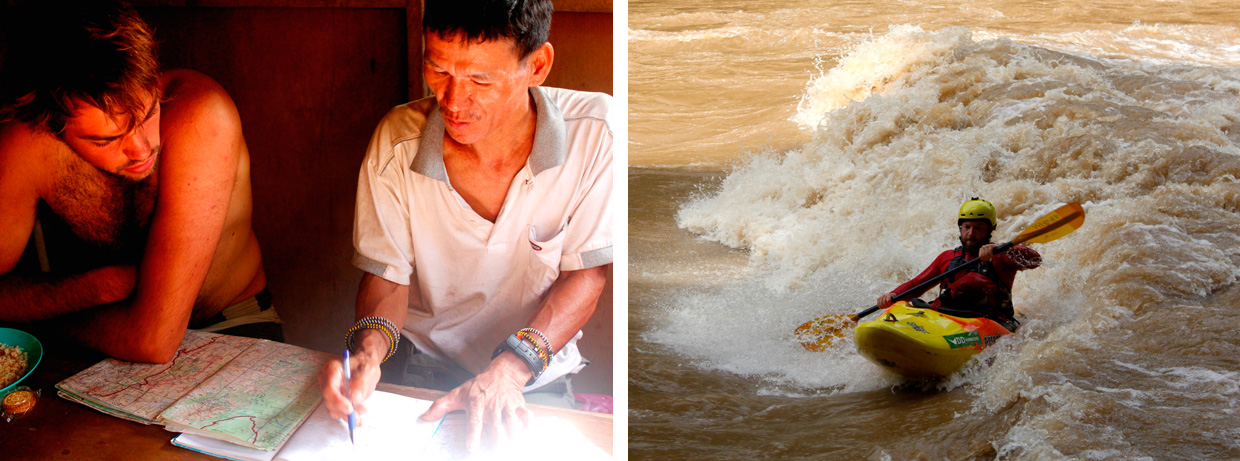
The hammocks, tarps and lines are ripped down, machetes drawn to slice further up the steep river sides. With adrenalin now pulsing through everyone’s arteries, it takes only minutes to clear the new camp spot. We work as a tight team dragging the heavy boats and kit up to the new area, only wavering slightly when Nick spies an Aplopeltura Boa snake.
We pack our boats with five days of food and excitedly peel out of the eddy and into the main flow of the river. We instantly feel its power. Deep in the gorge the river feels full of energy. Its dark colour suggests that it is in flood but it is not until we reach the first rapid that we realise how high it actually is. We fly down a tongue into huge waves breaking over our heads. We battle to control our loaded boats and we scout from the water as we go, catching glimpses of what lies downstream at the crest of towering waves. As the torrent hits the slack water, sucking whirlpools and gigantic boils erupt out of nowhere. Our tired arms have to keep battling. Eventually, the river calms down and we glance at each other with a knowing ‘this is going to be an interesting few days’ look on our faces. The river continues in this vein all day, huge rapids flowing into the next, with very little let up in between.
As the sun begins to set we spot the perfect beach to land and make camp. We stagger out of our boats, grinning from ear to ear—what an incredible first day. Rain starts to fall as we string our hammocks and tarps three meters above the river, allowing it to rise over night. The rain continues to strengthen until we are experiencing a full-on tropical storm. We are excited by the power of it, however, soaked to the skin, morale is difficult to maintain. Attempts to light a fire are futile so after a quick bite to eat, we slump in our hammocks, exhausted.
Patrick, in the lowest hammock, can see the river and notices its waves steadily creeping higher up the beach. As we slowly drift off to sleep, the river’s roar intensifies. Patrick calls out “Guys, the river is rising, we might have to move higher up”. I wriggle deep into my sleeping bag, trying to distance myself from the difficult conditions we are experiencing.
Moments later, Patrick calls again, this time with a frantic voice. “Guys, the river is in the trees, we need to move now!” This time we can’t ignore it. Our lives are in danger. We need to act fast. Panicked, we all jump out of the hammocks, throw on our soaking river cags and get to work. The hammocks, tarps and lines are ripped down, machetes drawn to slice further up the steep river sides. With adrenalin now pulsing through everyone’s arteries, it takes only minutes to clear the new camp spot. We work as a tight team dragging the heavy boats and kit up to the new area, only wavering slightly when Nick spies a harmless Aplopeltura Boa snake, but in the chaos and darkness, how sure can we be? During this time, the river has risen another three meters and is now ripping through the trees that we were once hung between.
Locals had warned us about the occurrence of flash floods but we had underestimated the speed and severity of them. With our new camp set up, we settle back into the hammocks, salvaging the rest of the night to sleep. In the morning, we inspect the damage. It appears that the river rose and dropped nearly ten meters over-night. With the river now only slightly higher than yesterday, we pack up for another exciting day on the water.
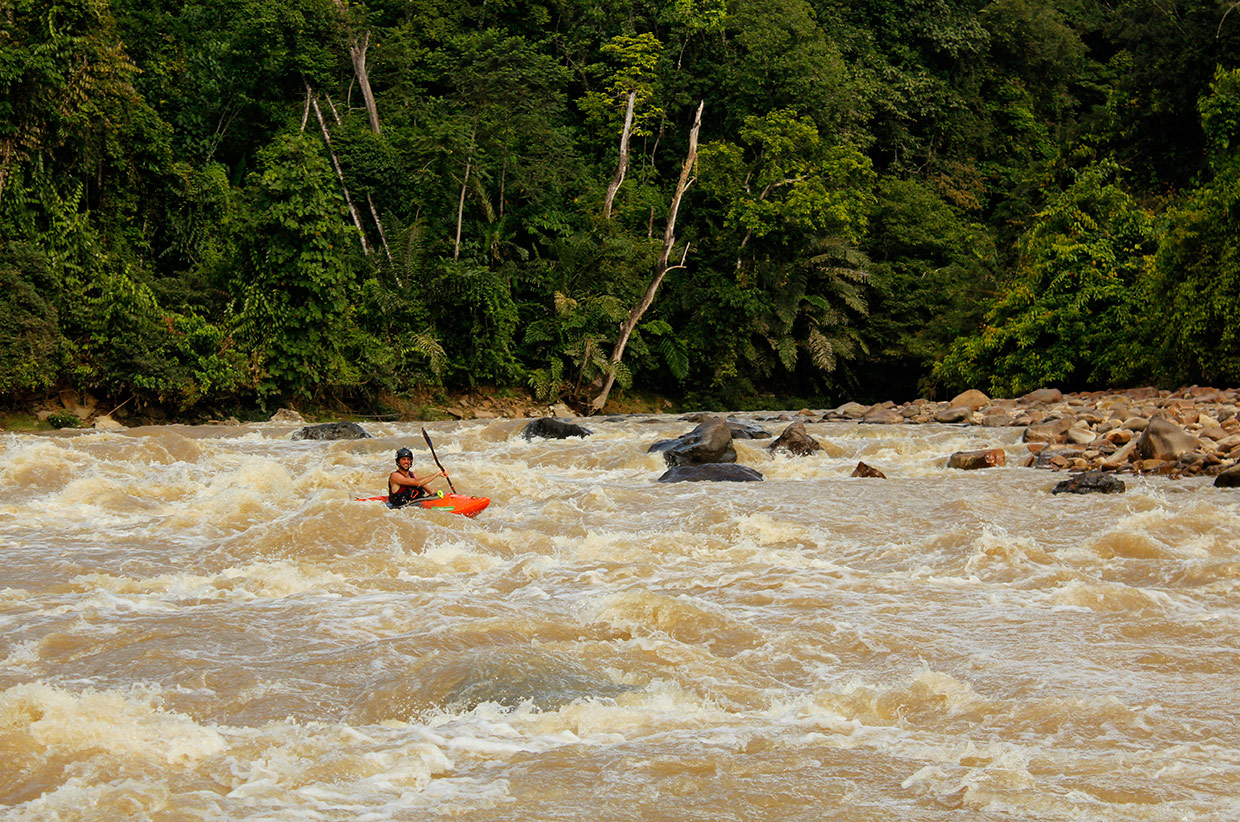
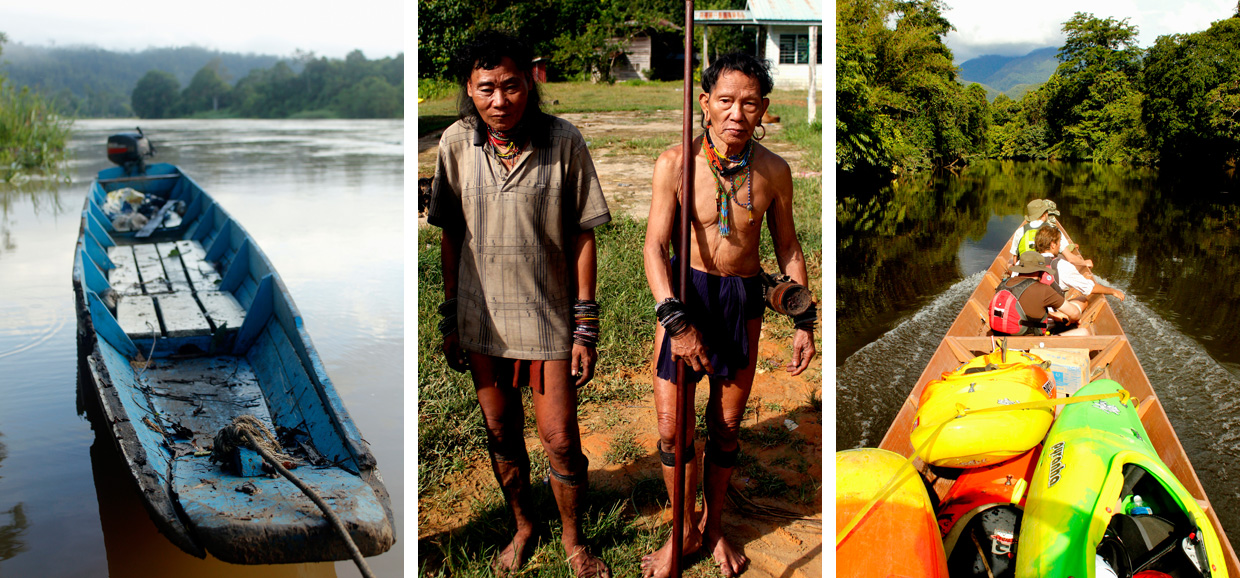
We spend another eight hours on the water, only stopping briefly to inspect a particularly large rapid and to scoff down some biscuits for lunch. As the light begins to fade we find a good beach to stop on. We plough onto the sand and slump over our paddles, exhausted. When we sit up, we are confronted by two men. They are wearing loin cloths with colourful jewellery and wielding what look like spears and parangs. Unsure of what our next move should be, we tentatively get out our boats and say “Hello, Apa khabar?” Hello, how are you? They do not respond. I reach in the boat for the phrase book and nervously speak again; “Siapa nama?” What is your name? “Nama saya Jonny”. My name is Jonny. No luck.
By this time more people have gathered. They are all younger, wearing more western clothes and, to our relief, all waving and smiling. The mood lightens. Then a man walks out speaking good English to greet us. He is the village chief of Long Sian and welcomes us in to the long house.
Like all traditional long houses, it is a wooden structure on stilts with a corridor at the front and doors leading off it to each families living quarters. This particular long house is 500 meters long with the chief’s house in the middle. He invites us into his long thin room and offers us coffee as we sit round a solid wooden table. We are joined by his five children and the two village elders that we first met. We tell him our story as his wife and daughters prepare some food. The village elders watch and listen inquisitively. We repeatedly thank him for his hospitality as the food is served. A juicy wild boar head dominates the centre of the table, and is surrounded by bowls of rice and vegetables from the jungle. Candles illuminate the space, offering a sense of warmth and security.
As we eat, we question the village chief about the history of the tribe, wanting to learn more about their cultures and traditions. He explains that they were nomadic until 1980 when they settled here with help from a government grant. The tribe still hunt wild boar and sambar deer with blowpipes and poison darts, living a subsistence lifestyle in the jungle. Now settled, they grow rice and a small quantity of crops to supplement their diet. Amazed with the blow pipes and darts, we ask how they were made. The chief explains that “straight pieces of ironwood are drilled using a steel drill bit” and that the poison darts are made by smearing distilled antiaris toxicaria tree sap on the tips of bamboo pieces. The sap attacks the animal’s central nervous system causing a heart attack in minutes. This same weapon was historically used by headhunter tribes to fight each other. Luckily, that custom has died out here.
We sleep incredibly well that night. Whether it is down to exhaustion, or the traditional rice wine they served, it’s hard to say. We know from our map that we only have another ten kilometres to cover, so after saying our goodbyes , we set off back to the jeep and civilisation.
We would like to thank Pyranha Kayaks, Palm Equipment, DD Hammocks, Alpkit, the BCU Expedition Fund and Canoe Foundation for their generous support.
For more information, visit their website: www.kayakborneo.co.uk




